✨You Can Touch the Times Square New Year's Eve Ball!
Find out how you can take home a piece of the old New Year's Eve ball!


The Statue of Liberty may be one of the most visited sites in New York City (if you’re willing to battle with the tourists), but it too has a long list of secrets and fun facts. Here we explore the history and architectural details that make the Statue of Liberty still one of the most unique landmarks in the city.
Designed as a gift to the United States, the Statue of Liberty (officially called Liberty Enlightening the World) has always maintained a connection to its native France. It was dreamt up by Edouard Rene Lefebvre de Laboulaye, a French abolitionist, lawyer, and poet. Its exterior was designed by Frederic Auguste Bartholdi, the French sculptor, its interior was created by Gustave Eiffel, the French engineer. It was built in France and paid for by its citizens.
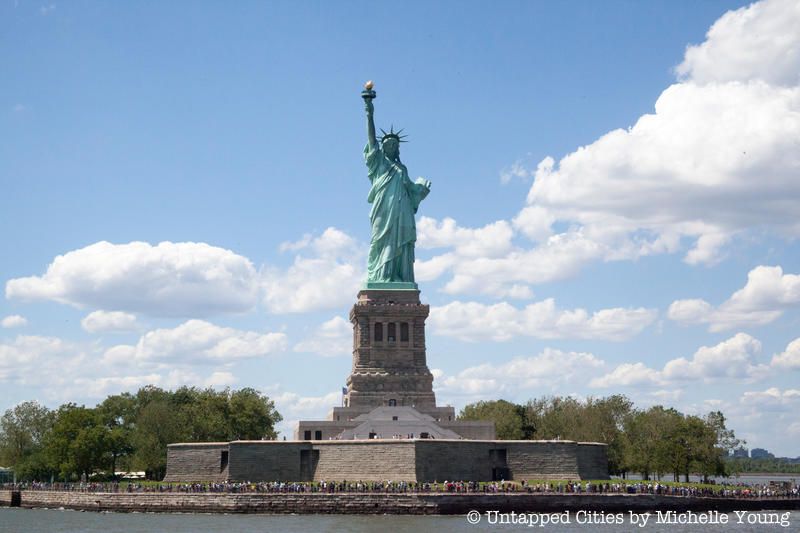
Though wildly beloved today, the Statue of Liberty faced an uphill climb in regards to its financing, here in America, particularly after the Panic of 1873. There was also some criticism of the statue itself, designed by sculptor Frédéric Auguste Bartholdi, with assistance from Gustav Eiffel who provided the engineering. There was grumbling that France should have also provided the base for the sculpture. It wasn’t until Joseph Pulitzer stepped in, announcing a fundraising drive. He promised to print the name of every contributor on his newspapers and even printed the notes he received from them. Although 80% of donations were less than $1, Pulitzer raised $102,000, equivalent to over $2.3 million today.
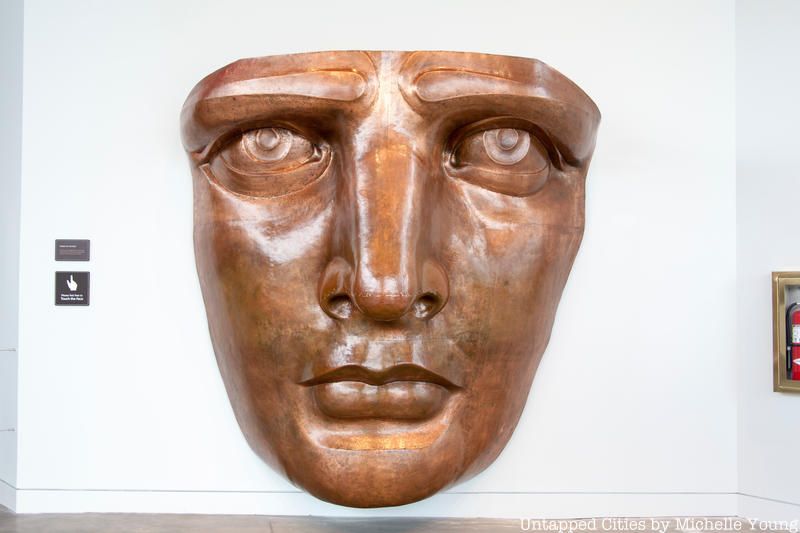
Although it is often reported that the face of the Statue of Liberty was modeled after sculptor Frédéric Auguste Bartholdi’s mother (or after an African American woman), French writer Nathalie Salmon reports in her 2014 book Lady Liberty I Love You that the fair visage of the Statue of Liberty is actually modeled on her ancestor Sarah Salmon, not Bartholdi’s mother.
Sarah Salmon immigrated to the United States with her husband Adolphe, a Jew from Lorraine, in 1861. Adolphe went out west and made a fortune in California. Ten years later, he met Bartholdi, who was already famous in France. On a visit to Paris in 1875, Adolphe and Sarah visited Bartholdi at his studio. Apparently, Bartholdi was in awe of Sarah’s features and luminous eyes. We may never know who it is actually modeled after (or if it was a combination of muses!).
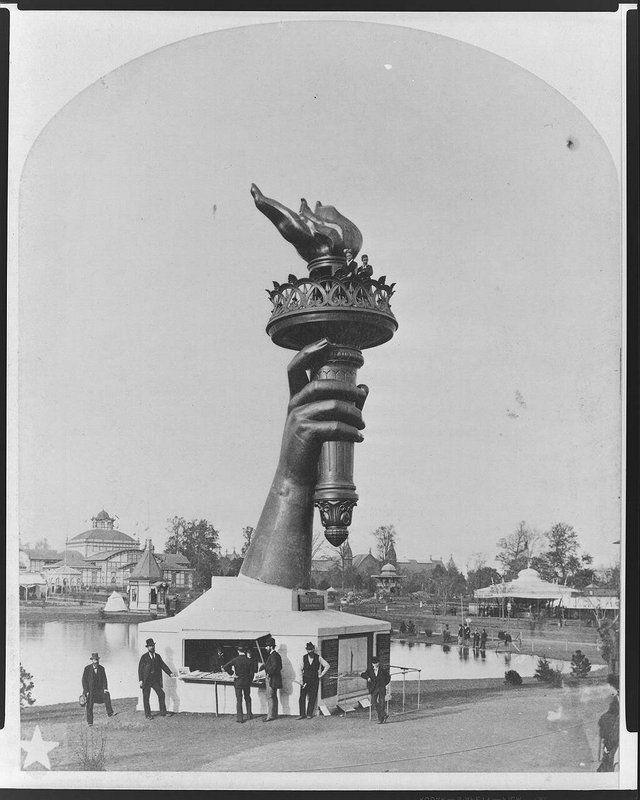
On June 17th 1885 the Statue of Liberty arrived from France in New York Harbor aboard the steamship, the Isère. Split into pieces and packed into crates, the Statue of Liberty actually arrived without its signature arm and torch–it came earlier and was displayed in Madison Square Park from 1876 to 1882 as a fundraising effort for the pedestal of the statue. 200,000 people came to greet the Isère, reflecting the changing tide of opinion about the sculpture. The statue was finally dedicated in 1886, with United States President Grover Cleveland presiding.

Constructed between 1807 and 1811, Fort Wood on Liberty Island (then Bedloe’s Island) was in the shape of an eleven-sided star. The pedestal of the Statue of Liberty was constructed within the old fort. The fort itself, along with brick houses next to it, was home to Army families from 1811 to the 1930s. Unlike Governors Island, also an Army base, there weren’t any stores on the island and no cars were allowed but there was a “recreation center with two bowling alleys,” reports The New York Times.
In a more dour part of the history, Bedloe’s Island was also the site of federal executions for several years, with the last taking place in 1860 according to the book, Liberty’s Torch: The Great Adventure to Build The Statue of Liberty, at which the “infamous pirate, Albert Hicks, was hanged for murdering a captain and two boys on an oyster sloop. Boats crammed against the shore to get a glimpse.” Discover more about the forts of New York City.
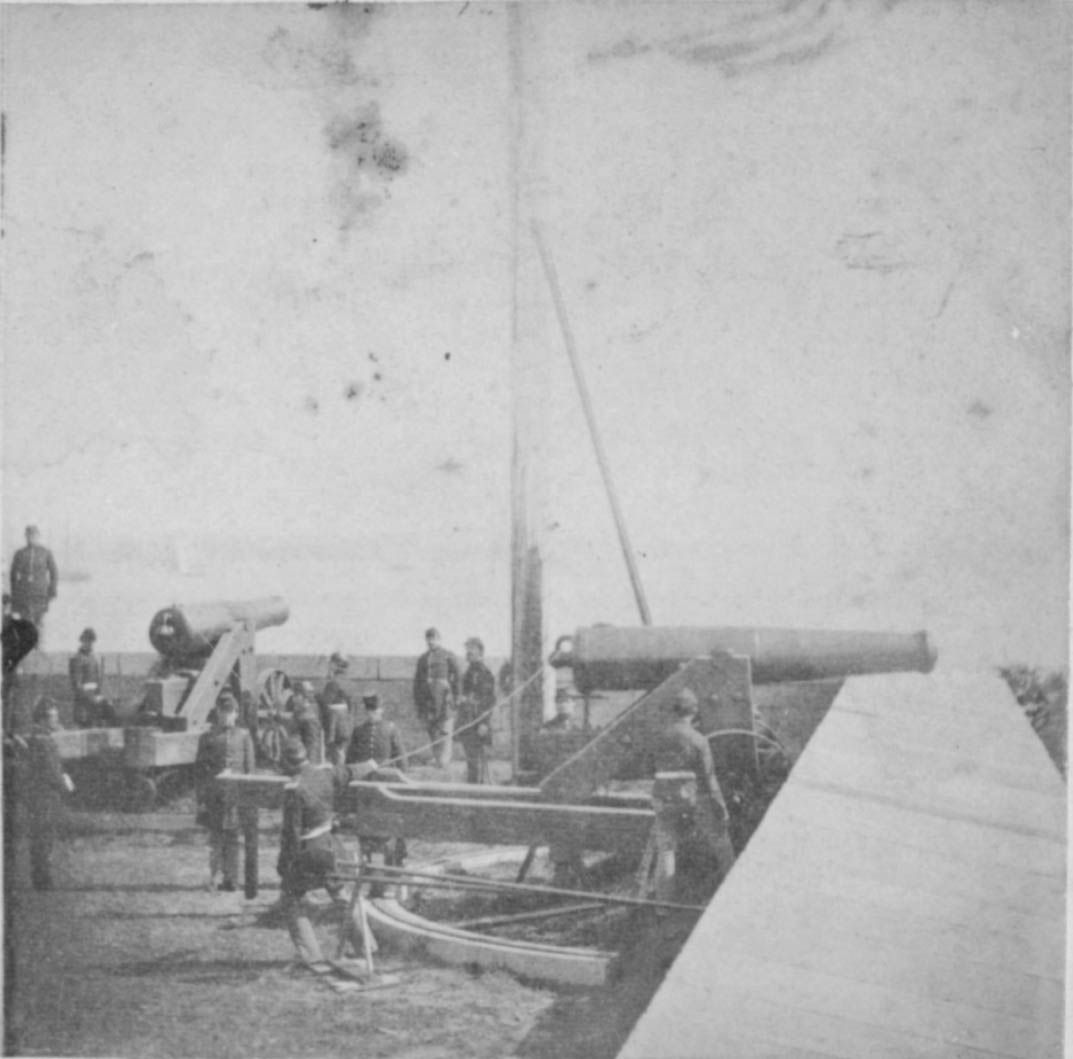
Before Liberty Island was home to the Statue of Liberty, it was privately owned from the time of the British takeover of New Amsterdam in 1664. In 1736, during this period of private ownership it was known as Bedloe’s Island (or Bedlow’s Island). New York City used the island as a place for quarantine as yellow fever and smallpox fears mounted. Later, Archibald Kennedy, later the 11th Earl of Cassilis bought the island and built a summer residence and allowed it to be used again as a quarantine facility in 1756. It was bought by the city in 1758 to be continued for such use, until the Revolutionary War broke during which the buildings were burnt down. In 1796, the quarantine facility for New York was moved to Governors Island. Read more about the former quarantine facilities in New York City and the abandoned islands of the city.
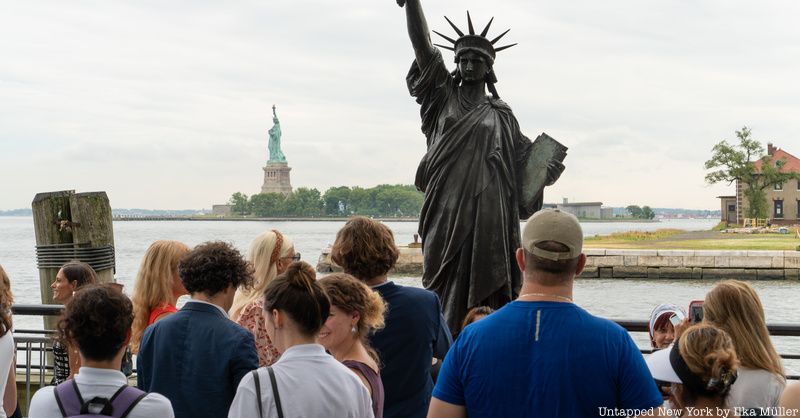
The Statue of Liberty is made of copper (3/32 of an inch thick, in fact) and when it arrived, it was just like the color of the penny. You can see what it would have looked like it Danh Vo’s installation. Reports vary as to when the Statue of Liberty started to turn green (from oxidation), but the New York Historical Society reports that the Statue of Liberty was fully green by 1920 based on vintage postcards. By 1910, it was half brown and half green.
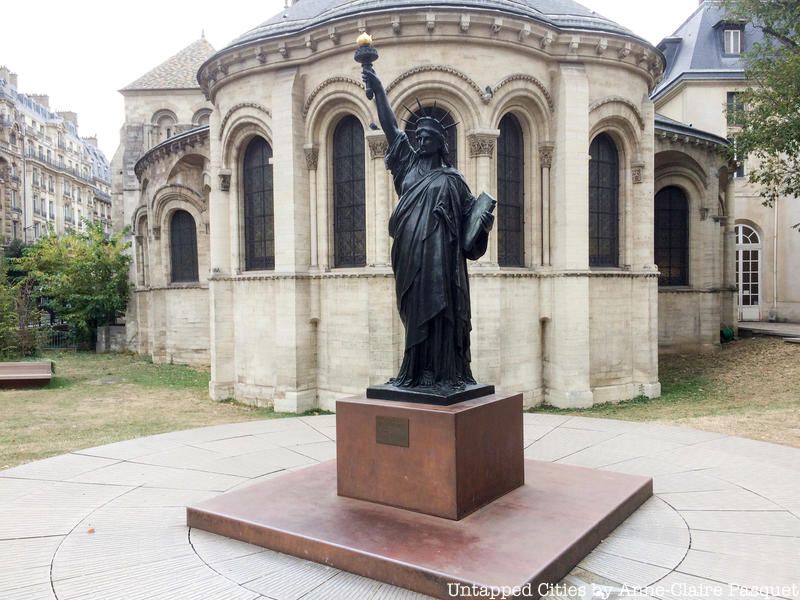
The original model of the Statue of Liberty (smaller than the original) stands in the Jardin du Luxembourg in Paris. The sculptor donated it to the Luxembourg museum for the World’s Fair of 1900 and it has been in this spot since 1906. A cast of this statue is in the Musée d’Orsay. Yet another version version sits on a manmade island in the Seine River. It was inaugurated close to the 100th anniversary of the French Revolution, on July 4, 1889, and has two dates on the tablet–July 4, 1776 and July 14, 1789–to mark the revolution in both nations.
The original plaster sculpture for the Statue of Liberty is in the Musée des Arts et Metiers in Paris and a a life-size copy of the flame of liberty on the Pont de l’alma, not too far from the Eiffel Tower. It was given to the city by donors around the world to symbolize Franco-American friendship on the 100th anniversary of the Statue of Liberty dedication. Because it sits above the tunnel of Princess Diana’s fatal car crash, the torch and the wall behind it has become an unofficial memorial.
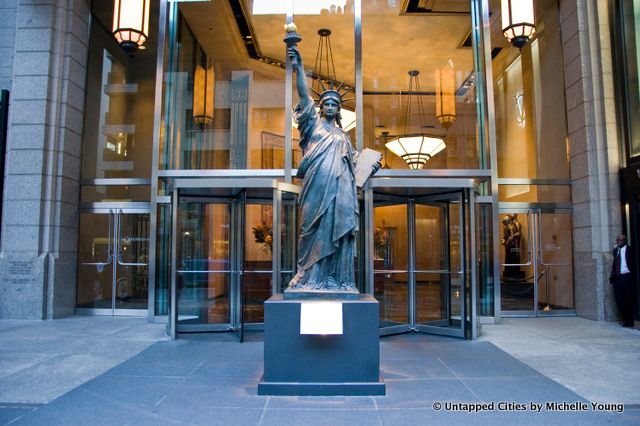
Discounting the number of plastic versions in souvenir shops and the like, in New York City, Statue of Liberty sculptures can be found at the Brooklyn Museum, in front of 667 Madison Avenue, atop a roof in the Bronx. There is a Lego version in Times Square and artist Danh Vo put up a deconstructed version of the statue in pieces scattered around New York City in 2014, a project with the Public Art Fund. See the New York City versions in photos here. There is even a replica of the Statue of Liberty that used to stand at the Brooklyn Museum but has since moved west to St. Louis.
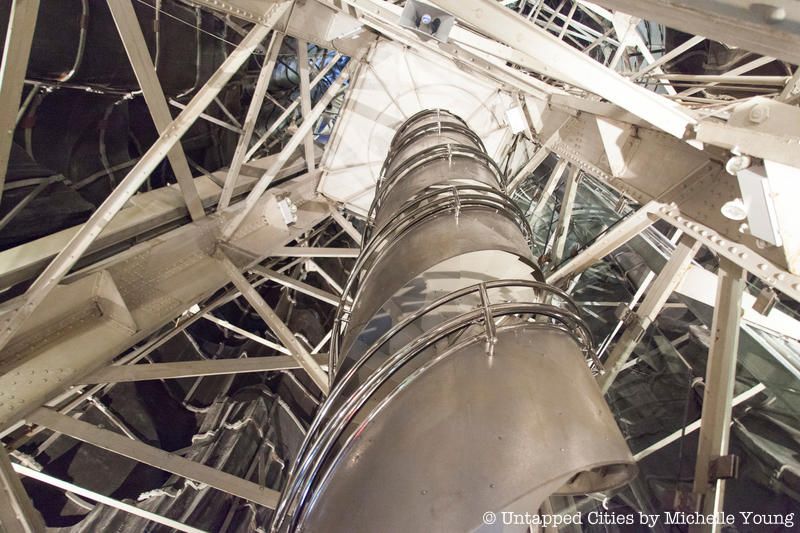
Masonic theories abound about the Statue of Liberty’s connection to the masons. Those who do ascribe to the theory cite Bartholdi’s and Eiffel’s membership in the Freemasons, that many original plans for the statue demonstrate the link and that many elements of the statue carry symbolic meaning.
In addition, the masons presided over the cornerstone laying for the Statue of Liberty, a moment commemorated in a 1984 plaque in dedication to the masons on the 100th anniversary. In 1884, the grand master William A. Brodie laid the cornerstone with grand lodge members present. Brodie is reported to have said, “Why call upon the Masonic Fraternity to lay the cornerstone of such a structure as is here to be erected? No institution has done more to promote liberty and to free men from the trammels and chains of ignorance and tyranny than has Freemasonry.”
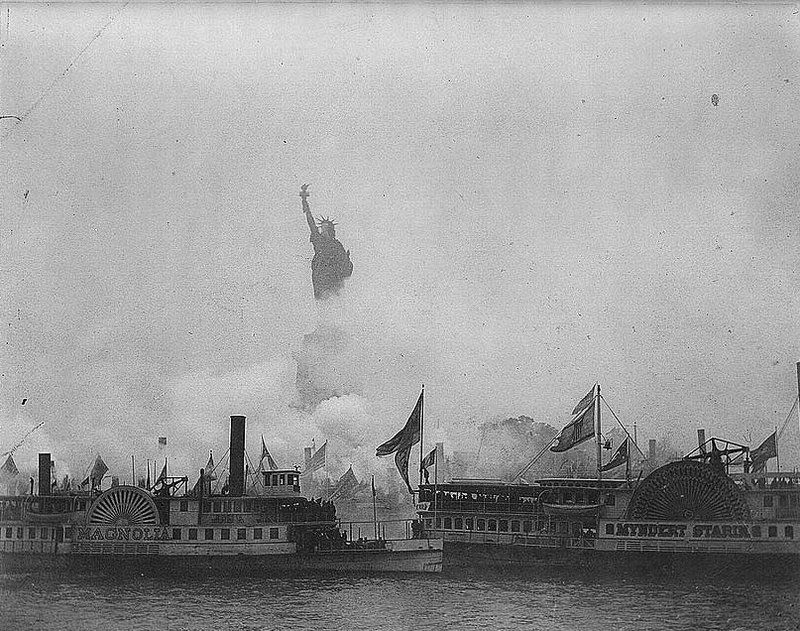
On October 28th, 1886 the Statue of Liberty was dedicated in a ceremony presided over the United States President Grover Cleveland in the presence of French and American dignitaries. A military salute took place and the historical photograph shows steam sideship boats surrounding the statue.

Discover hidden remnants of old Penn Station and explore a new train hall inside a historic Post Office building!
On October 28th, 1963 the demolition of the original Pennsylvania Station began. The station was only 53 years old, completed when parts of the Statue of Liberty was still copper in color. Join us on our upcoming tours of the Remnants of Penn Station!
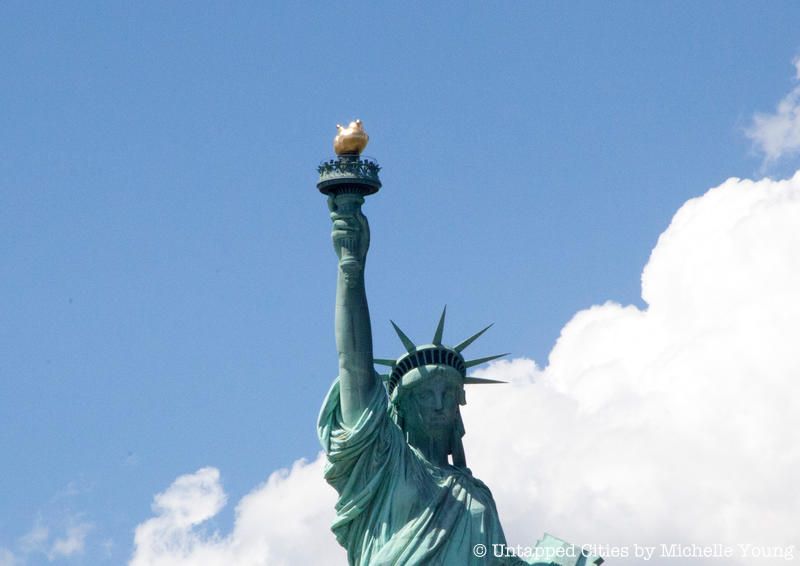
The torch of the Statue of Liberty warranted its own list of secrets–but here’s a teaser: it’s not the original one. Read more about it here!
Next, read check out Top 10 Secrets of Grand Central Terminal!
This article was also partially written by Benjamin Waldman. Get in touch with the author @untappedmich.
Subscribe to our newsletter